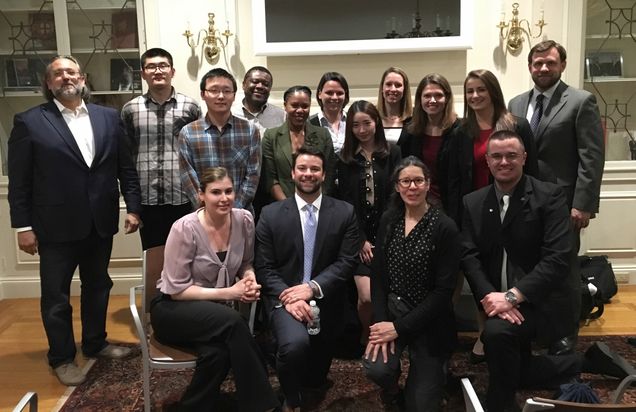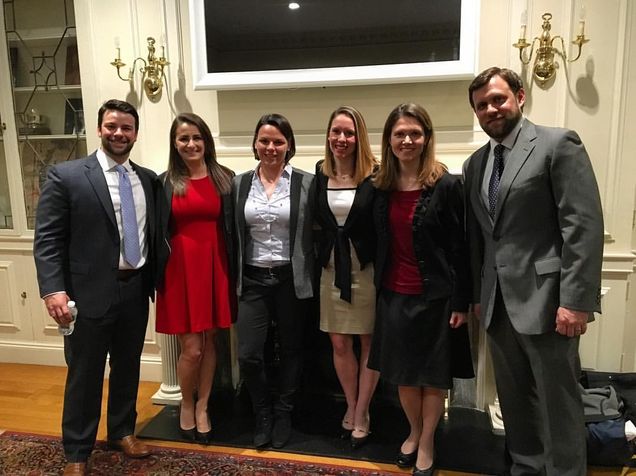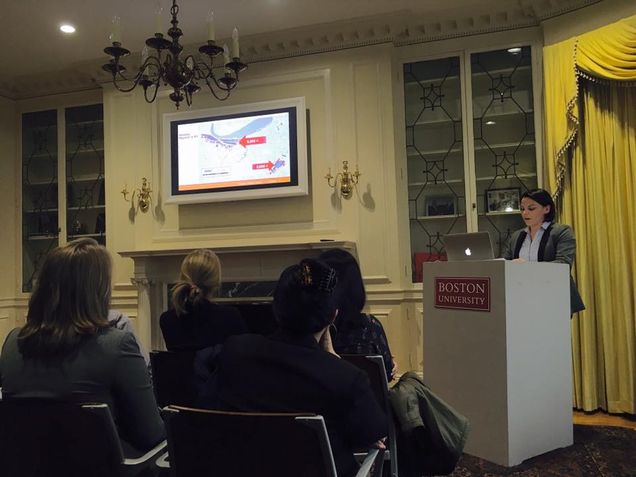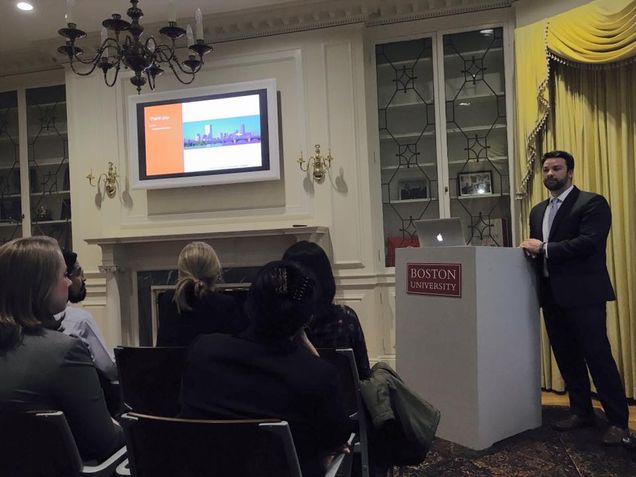BUCPUA Boston Urban Symposium delivers its Imagine BU 2030 proposal to City leaders
On April 25, 2016, students participating in the Boston Urban Symposium capstone course (Urban Affairs 805) delivered their vision for Boston University in 2030. As an educational institution and the third largest employer in Boston, Boston University can leverage its planning and development potential through its own institutional master plan. By implementing this vision, the students demonstrated that BU can serve an institutional case model among the high density of educational and medical institutions in Boston.



City leaders, field professionals, and the BUCPUA community listened to their proposals, which emphasized creating opportunities for BU employees to both live in Boston and efficiently use public transit. Specific proposals included developing mixed-use graduate and workforce housing upon under-utilized campus lots, along with targeting BU’s brownstones solely for workforce and graduate housing. To achieve these housing proposals, the students recommended obtaining financing through tax-free bonds, developing public-private partnerships, and establishing non-profit management of BU’s brownstones through a long-term master ground lease. Transit proposals included improved bike access from BU to the Charles River Esplanade along with coordinating the numerous shuttle services in the Boston area; these steps can align transit with the most prevalent travel patterns and overcome gaps in the MBTA subway system routes.

In conclusion, the inter-related nature of housing and transit, combined with the demand for workforce housing, requires action from not only the City, but also collaboration among its numerous educational and medical institutions. Therefore, the students asserted that an “Eds/Meds Consortium” in Boston could capitalize upon City-owned lots by partnering with non- profit housing developers and public-private developers to establish workforce housing. Furthermore, this “Eds/Meds Consortium” could monitor its workforce’s travel needs and generate residents for newly established workforce housing.

– Courtney Thraen (MET’17)